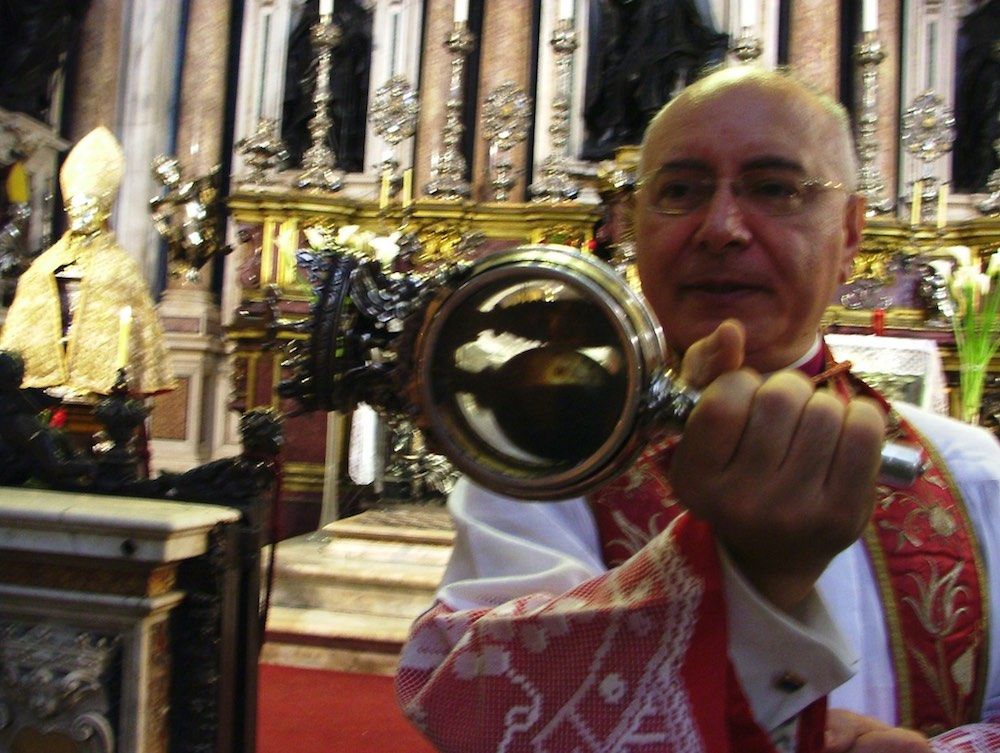Failed 'Blood Miracle' Forecasts Disaster in 2017

2017 is set to be a disaster, if you believe in the bad omen brought by a 627-year-old "blood miracle" which failed to occur in Naples last Saturday.
The story goes that failed miracles have been followed by disasters such as the Nazi invasion of Italy, a cholera epidemic and a deadly earthquake.
Regularly recorded since 1389, the so-called miracle of San Gennaro involves the liquefaction of the congealed blood of Saint Januarius, a pious bishop who was martyred around 305 AD during the persecution of early Christians by Roman Emperor Diocletian.
Legend has it that when Gennaro was beheaded, a woman called Eusabia soaked up his blood with a sponge and preserved it in a glass vial.
The blood miracle normally happens three times a year: on September 19, the saint's feast, on the first Sunday in May, to celebrate the day the saint's body was brought back to Naples, and on December 16, to commemorate the 1631 eruption of Mount Vesuvius, whose lava is believed to have halted at the city's gates by the saint's intervention.
The procedure is always the same. During a ceremony attended by thousands, the archbishop of Naples shakes a vial in which a dark, solid mass can be seen turning into liquid.
RELATED: Doomsdays That Never Happened
Sign up for the Live Science daily newsletter now
Get the world’s most fascinating discoveries delivered straight to your inbox.
But last Saturday the blood failed to liquefy. The failed miracle is popularly seen as a bad omen.
"We must not think about disasters and calamities," Vincenzo De Gregorio, the Abbott of the Chapel of the Treasure of San Gennaro, told the Naples' daily Il Mattino. "We are men of faith, and we must continue to pray."
The failed liquefaction has been always seen as a sign of upcoming disaster, spreading from Naples to Italy and the world.
The blood did not liquefy in 1939, when World War II broke out, nor in 1943, the year the Nazi occupied Italy, nor in 1973, remembered for a bout of cholera in Naples. Most recently, it failed to liquefy in 1980, when a devastating earthquake struck Irpinia, some 30 miles east of Naples, leaving more than 2,400 people dead.
According to the website storiacity.it, over the centuries the failed miracle coincided with 22 epidemics, 11 revolutions, three droughts, 14 archbishops death (within a 30-day period), nine dead popes (over a period of a few weeks), four wars, 19 earthquakes, and three religious persecutions.
RELATED: Rome Still Intact Despite Earthquake Prediction
The Vatican has taken a neutral position on San Gennaro's blood "miracle," while several scientists remain skeptical.
In a 1991 study published on Nature, Italian researchers argued that the dried blood in the ampules contains a thixotropic gel that liquefies when the ampules are stirred or shaken and solidifies again when left undisturbed. This is known to happen with certain substances, including some types of mayonnaise.
The 14th-century hoax recipe would have required hydrated iron chloride, which occurs naturally in minerals found on active volcanoes and in limestone, marble, chalk and seashells.
Whatever the explanation, the "failed miracle leaves us with an irrational uneasiness," Il Mattino wrote.
Orignally published on Seeker.



